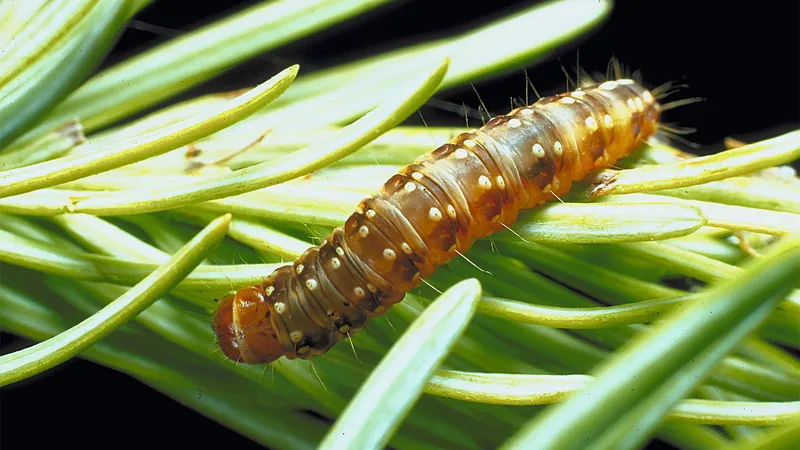
Secret Allies: How Fungi Empower Spruce Trees Against Budworm Attacks
2025-05-23
Author: Noah
Unveiling Nature's Hidden Partnerships
Groundbreaking research from the University of Alberta reveals a fascinating alliance between trees and fungi that bolsters forest resilience amid pest invasions. These tiny endophytes—beneficial bacteria and fungi residing within the tissues of white spruce—are proving to be crucial defenders against the notorious eastern spruce budworm.
The Power of Fungal Defense
According to forest entomologist Nadir Erbilgin, who led the study, this collaboration offers a comprehensive look at how fungi enhance the tree's ability to fend off this destructive insect. "It’s like discovering that trees have secret allies working behind the scenes to protect them," Erbilgin explains.
Research Insights and Methodology
The researchers embarked on an intricate journey to unlock these secrets. They collected spruce needles and leveraged DNA sequencing to identify the resident fungal species. In their lab, they cultivated these fungi and tested their effects by introducing them to white spruce seedlings. This experimental approach revealed how variations in fungal communities could shift the tree's defensive chemistry.
Dual Defense Mechanisms Revealed
Led by PhD candidate Aziz Ullah, the study unveiled two remarkable ways fungi fortify trees against budworms. First, they enhance the spruce's natural defenses, boosting the production of terpenes—chemical compounds that trigger a robust response against infestations. Secondly, these fungi release toxic substances either through their own tissues or as volatile compounds, actively harming or killing budworm larvae.
Confirming the Plant Partnership Hypothesis
This research confirms the 'Plant Partnership Hypothesis,' proposing that fungi contribute to the production of chemicals that elevate plant resistance to pests. In return, these fungi draw essential nutrients from their host plants. Ullah remarked, "By proving this hypothesis, we’ve illuminated that fungi are not mere passive passengers; they have co-evolved with trees to enhance survival, particularly against pests."
Implications for Forest Management
This groundbreaking discovery paves the way for innovative strategies in forestry and agriculture, enabling the development of sustainable alternatives to chemical pesticides. Identifying specific endophytes that bolster tree defenses opens avenues for breeding or inoculating trees with these beneficial fungi, potentially leading to healthier forests resistant to pest pressures.
Future Research Directions
The findings hold promise beyond just spruce trees, as similar research is already underway targeting lodgepole pine to combat mountain pine beetles. With backing from the Natural Sciences and Engineering Research Council of Canada, this study sets the stage for a new era in forest pest management, offering hope for more resilient ecosystems.









 Brasil (PT)
Brasil (PT)
 Canada (EN)
Canada (EN)
 Chile (ES)
Chile (ES)
 Česko (CS)
Česko (CS)
 대한민국 (KO)
대한민국 (KO)
 España (ES)
España (ES)
 France (FR)
France (FR)
 Hong Kong (EN)
Hong Kong (EN)
 Italia (IT)
Italia (IT)
 日本 (JA)
日本 (JA)
 Magyarország (HU)
Magyarország (HU)
 Norge (NO)
Norge (NO)
 Polska (PL)
Polska (PL)
 Schweiz (DE)
Schweiz (DE)
 Singapore (EN)
Singapore (EN)
 Sverige (SV)
Sverige (SV)
 Suomi (FI)
Suomi (FI)
 Türkiye (TR)
Türkiye (TR)
 الإمارات العربية المتحدة (AR)
الإمارات العربية المتحدة (AR)